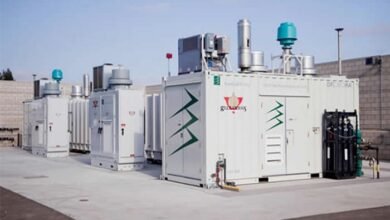How to Invest in Commodities: A Beginner’s Guide

Commodities are natural resources or agricultural products that are traded on the global market. They include metals, energy, grains, livestock, and soft commodities such as coffee, sugar, and cocoa. Investing in commodities can offer several benefits, such as diversification, inflation protection, and exposure to global demand. However, commodities also come with some risks, such as volatility, liquidity, and regulation. In this article, we will explain what commodities are, how they are classified, and how you can invest in them.
What are Commodities?
Commodities are basic goods that are used in the production of other goods and services. They are usually standardized and interchangeable, meaning that one unit of a commodity is the same as another unit of the same commodity. For example, one barrel of crude oil is the same as another barrel of crude oil, regardless of where it is produced or refined.
Commodities are traded on exchanges or over-the-counter (OTC) markets, where buyers and sellers agree on the price and quantity of the commodity. The price of a commodity is determined by the forces of supply and demand, as well as other factors such as weather, geopolitics, and speculation.
How are Commodities Classified?
Commodities are generally classified into four main categories: metals, energy, agricultural, and soft commodities.
- Metals include precious metals such as gold, silver, platinum, and palladium, and base metals such as copper, zinc, nickel, and aluminum. Metals are used for various purposes, such as jewelry, electronics, construction, and industrial production.
- Energy includes crude oil, natural gas, coal, and uranium. Energy commodities are used for generating power, heating, transportation, and manufacturing.
- Agricultural includes grains such as wheat, corn, soybeans, and rice; livestock such as cattle, hogs, and poultry; and dairy products such as milk and cheese. Agricultural commodities are used for food consumption, animal feed, and biofuels.
- Soft commodities include coffee, sugar, cocoa, cotton, orange juice, and rubber. Soft commodities are mostly grown in tropical or subtropical regions and are used for food consumption or industrial purposes.
How to Invest in Commodities?
There are several ways to invest in commodities. Some of the most common methods are:
- Futures and options contracts: Futures and options contracts are agreements to buy or sell a specific quantity of a commodity at a predetermined price and date in the future. Futures and options contracts allow investors to profit from the price movements of commodities without owning them physically. However, they also involve leverage, margin requirements, expiration dates, and rollover costs.
- Exchange-traded funds (ETFs) and exchange-traded notes (ETNs): ETFs and ETNs are securities that track the performance of a commodity index or a basket of commodities. ETFs and ETNs allow investors to gain exposure to commodities without dealing with futures and options contracts. However, they also involve fees, tracking errors, and tax implications.
- Stocks of commodity producers: Stocks of commodity producers are shares of companies that produce or process commodities. Stocks of commodity producers allow investors to benefit from the growth potential and dividends of these companies. However, they also involve company-specific risks, such as management quality, competition, and regulation.
- Physical ownership: Physical ownership involves buying and storing commodities directly. Physical ownership allows investors to have full control over their commodities and avoid counterparty risks. However, it also involves high costs, such as transportation, storage, insurance, and security.
Conclusion
Commodities are natural resources or agricultural products that are traded on the global market. They offer several benefits for investors, such as diversification, inflation protection, and exposure to global demand. However, they also come with some risks, such as volatility, liquidity, and regulation. Investors can choose from various methods to invest in commodities, such as futures and options contracts, ETFs and ETNs, stocks of commodity producers, or physical ownership. Each method has its own advantages and disadvantages that investors should consider before making their investment decisions.



